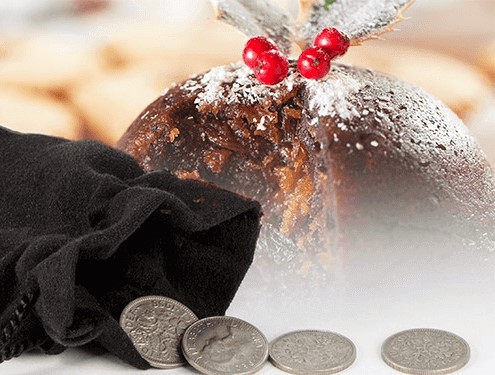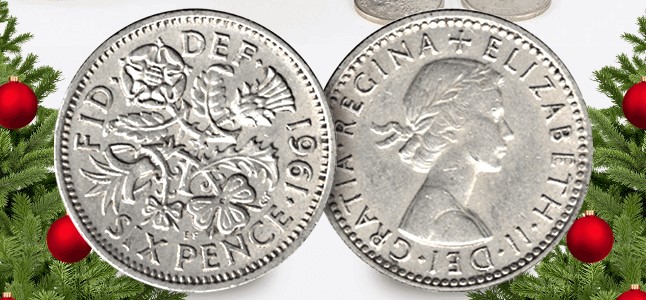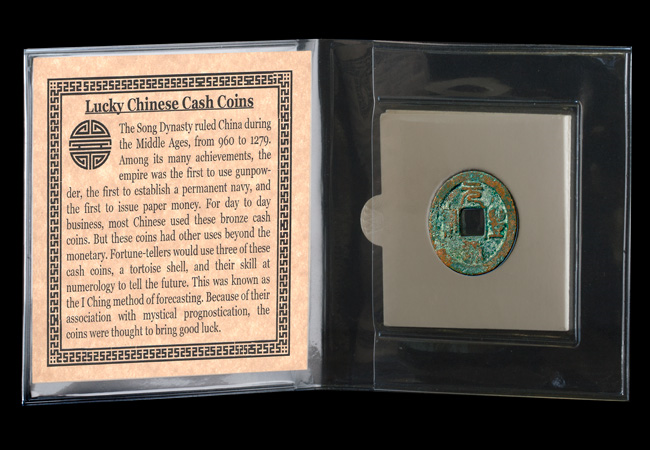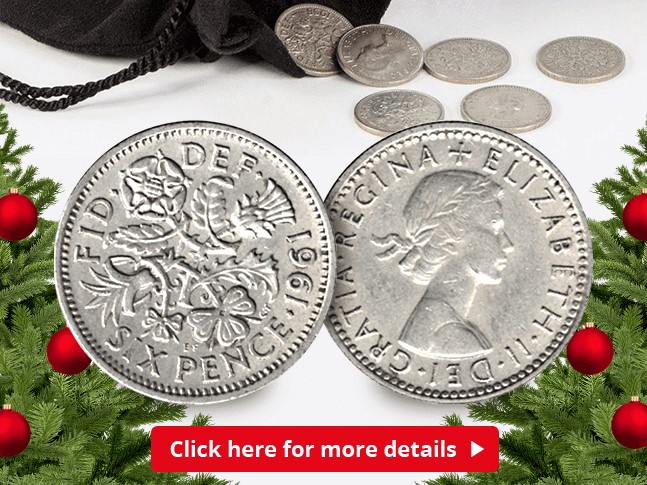Posts Tagged ‘lucky coin’
Could your luck be in this Chinese New Year?
Today is Chinese New Year, the world’s most celebrated festival, which marks the new year on the Chinese calendar.
Many traditions and customs have been adopted over the years, with popular themes surrounding good luck and fortune for the year ahead.

Chinese New Year celebrations. Credit: Time Magazine
Chinese Lucky Cash Coin
This coin has been issued in China since 221 BCE and is thought to bring good luck.
The unusual shaped Lucky Chinese Cash Coin features a square hole at its centre to represent Earth, while the circle symbolises heaven. This combination of heaven and earth make the coin a symbol of harmony and prosperity.

Chinese Lucky Cash Coin
Chinese fortune-tellers would use cash coins, a tortoise shell, and their skill at numerology to tell the future. Because of their association with mystical prediction, these coins from China are thought to bring good luck.
Manufacture
Traditionally, these coins were cast in copper, brass or iron and in the mid-19th century they were made of 3 parts copper to 2 parts lead. Rarer silver coins were also produced and gold coins are also known to exist but are even rarer.
Early manufacture methods of these coins included carving the individual coin directly onto a soapstone or clay mould. This rough and ready approach means that early Chinese coins are very diverse, as each was cast from a different mould bearing the same inscription.
Master bronze moulds were later introduced to gain consistency.

Chinese cash coins minted between 330 BC and 1912 AD
It was in the mid 19th century that the first machine-struck cash coins were produced following the introduction of a machine operated mint in Guangzhou, Guangdong province.
These coins tended to be made from brass rather than pure copper and as the copper content decreased and cheaper metals like lead and tin became more dominant, the coins took on a yellowish tint.
Modern use
Originally the hole in the centre of the coin was used to string them together, creating higher denominations, however in the modern era the coins are strung together and placed round the necks of children, or over the beds of sick people for luck.
Some Chinese businesses also hang Chinese cash coins as store signs for good luck and they can even be seen featuring on the logos of the Bank of China and the China Construction Bank.
The cash coin is also used in Feng shui, where they represent an abundance of resources, personal wealth, money, and prosperity.
It’s always fascinating to learn about world coins and the stories behind their origins.
Will you be celebrating Chinese New Year today? Keep your eyes out for any Chinese cash coins and see if your luck could be in this year!
Own the Lucky Chinese Cash Coin
Celebrate the Chinese New Year with a coin that many believe will bring good luck and prosperity for the year ahead.
Each coin comes housed in a wallet with informative Certificate of Authenticity detailing the history of the coin.
Click here to secure the Chinese Lucky Cash Coin for your collection today >>
Stir Up Sunday – the story behind the numismatic Christmas tradition
There are countless coins thought to be lucky, but there’s one lucky coin in particular which comes to my mind at this time of year…
The much-loved lucky Sixpence has been a part of Christmas traditions for generations and as this weekend marks ‘Stir-up Sunday’, we take a look back at the tradition that harks back to Victorian times.

Christmas tradition
Stir Up Sunday is celebrated five weeks before Christmas Day, when the whole family would gather together to stir the Christmas pudding and make a special wish for the year ahead.
The Christmas pudding itself is said to have been introduced to Britain by Prince Albert, husband of Queen Victoria and traditionally, when making the pudding, a sixpence would be added to the mix.
This was said to bring wealth and good fortune in the coming year if you found the coin in your portion on Christmas day.
It’s no surprise that collectors love these coins so much. The 1961 Sixpence below can be seen featuring an entwined design of a flora, leek, rose, thistle, and shamrock, the sixpence has long been a token of good luck so is an original and thoughtful gift for a friend or relative.

The Sixpence was first minted during Edward VI’s reign in 1551 and was struck in silver up until 1947. From this date onwards the coin was struck in cupronickel.
But there is one particular Victorian Sixpence that collectors hunt for…
The 1887 Withdrawn Silver Sixpence
In 1887, new coin designs were to be issued for Queen Victoria’s Golden Jubilee. Surprisingly, the Silver Sixpence shared the same design as the Gold Half Sovereign.
Of course, it didn’t take long for some crafty opportunists to start coating the Silver Sixpence in gold paint after realising they could easily be passed off as the far more valuable Half Sovereign.
The authorities hastily withdrew the Sixpence and a quick redesign took place, with the new 1887 Sixpence reverting to a design similar to previous years, with a crown at the top of the design and a wreath around the sides, with “SIX PENCE” written across the middle of the coin.

1887 Withdrawn Silver Sixpence
Nobody can be sure how rare these coins are, as mintage figures only record how many Sixpences were issued each year, rather than individually listing each design type and, because there were three different designs of the Sixpence in 1887, it’s impossible to know how many withdrawn coins survived.
One thing is certain though, the withdrawn coin is the Sixpence collectors hunt high and low for.
So whether you’re looking to hunt down a rare Sixpence for your collection, or if you’re preparing your Christmas pudding ready for Stir Up Sunday, we wish you the very best of luck this festive season.
Secure a special set of six Sixpences
The Sixpence has long been a token of good luck so is an original and thoughtful gift for a friend or relative.


